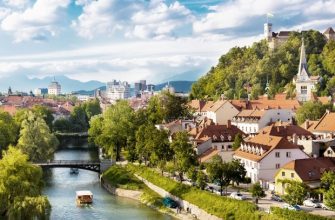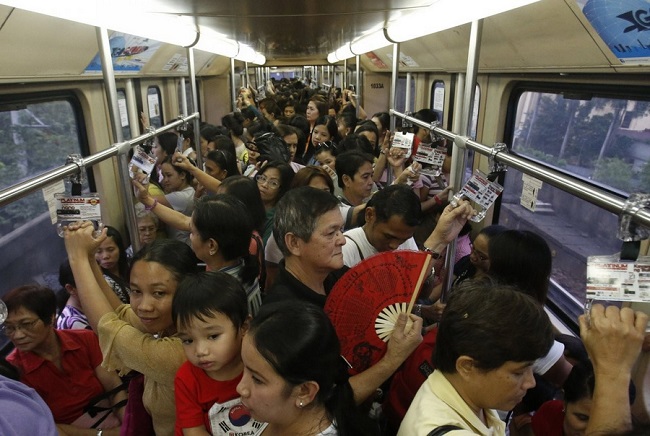
In addition to the environmental problems Manila is experiencing economic and demographic challenges. The birth rate rose to 3.1 children per woman, while the city residents face growing inequalities in living conditions. The number of high-rises and skyscrapers, but the number of slums is also increasing, where seek shelter all those who have suffered from natural disasters or suffered a financial collapse.
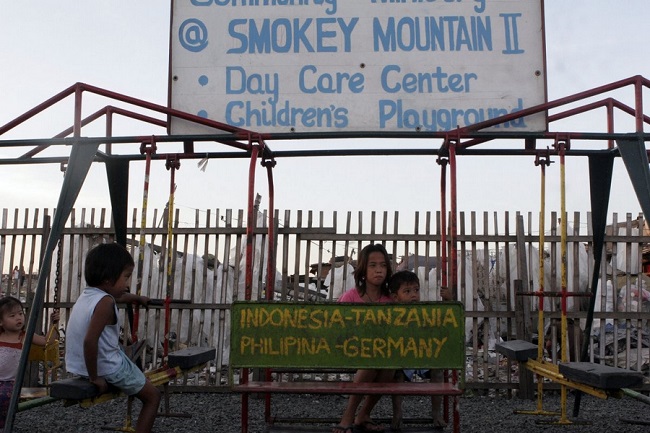
Manila is located on the northwest coast of the Philippines. Its population is 1.6 million people, is divided into business district of Makati City, and those who survive on the fringes of the poorer quarters.
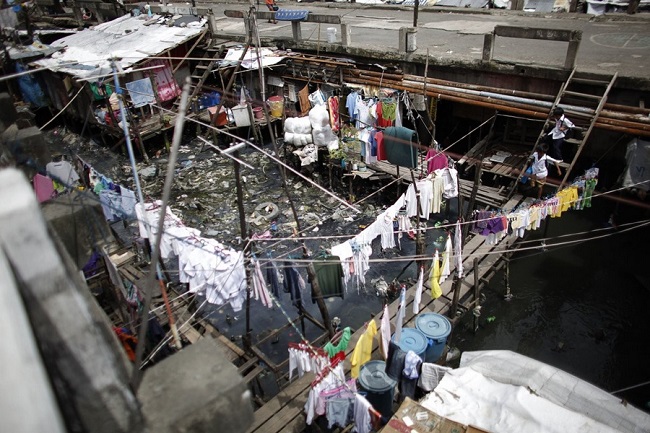
In the poorest parts of the city people gather in a kind of community. They live in houses built on stilts, and their clothes are drying on the clothesline that stretched between the rickety roofs.

Frequent floods lead to that the waste enters water, polluting it, which increases the risk of bacterial diseases.
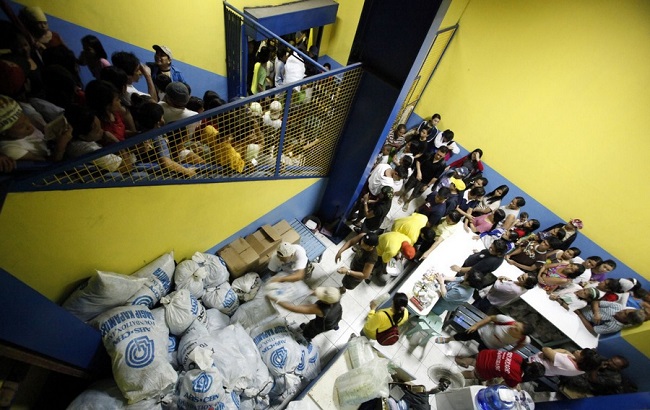
In particularly difficult situations, such as in 2009 when the city became a victim to a series of floods, gyms were used as shelters. However, the population density of this has not diminished – people simply moved from one place to another.
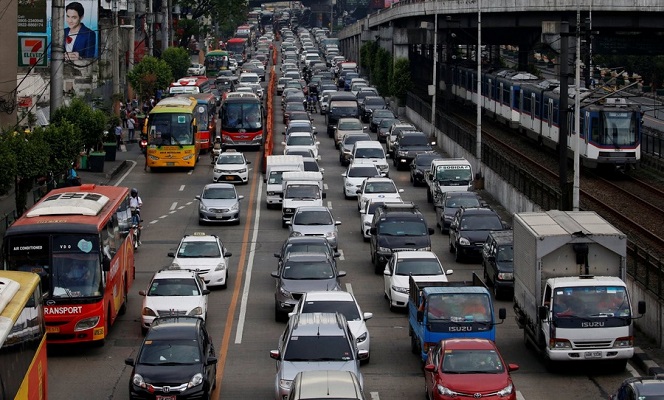
But even in quiet times Manila is overcrowded. To get anywhere, the citizens have to choose: to stand in traffic jams or spend time in crowded buses and trains.
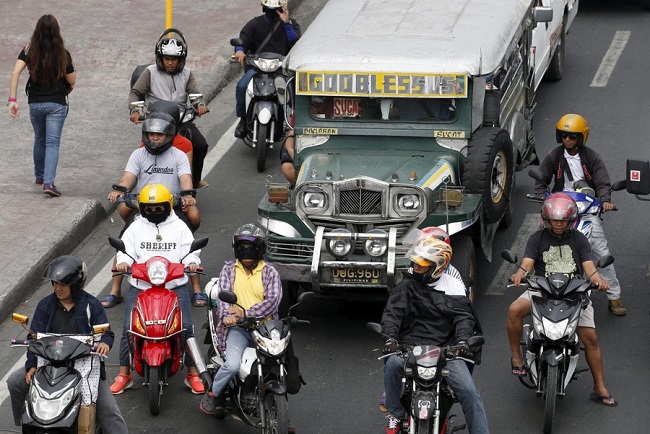
It is not surprising that more and more Filipinos get motorcycles. Freedom of movement becomes greater, but the risk of car accidents increases.
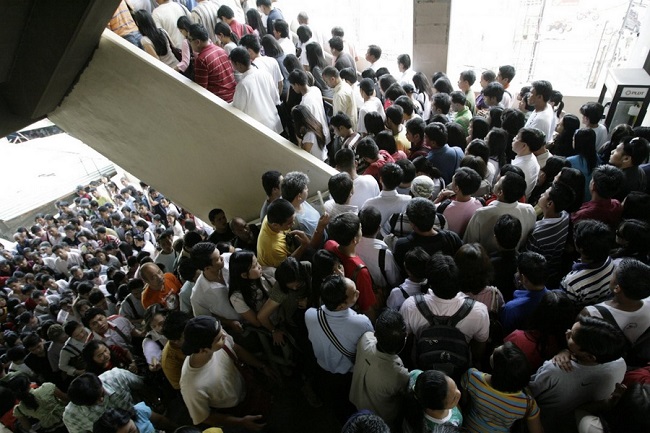
In 2008, the economic downturn led to the fact that fuel prices have jumped so high, so more and more people started to use public transport. In the photo, hundreds of people shoulder to shoulder are going up to the commuter train station, which is likely to be overcrowded.
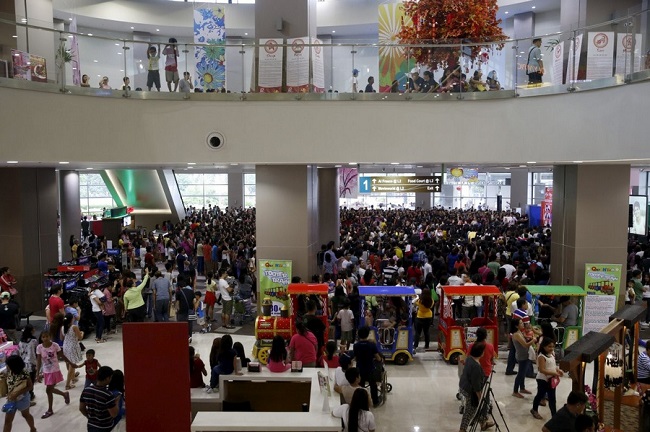
At the end of the day, locals rush to the shopping centers, which became part of the local culture in Manila. They also full of a lot of people.
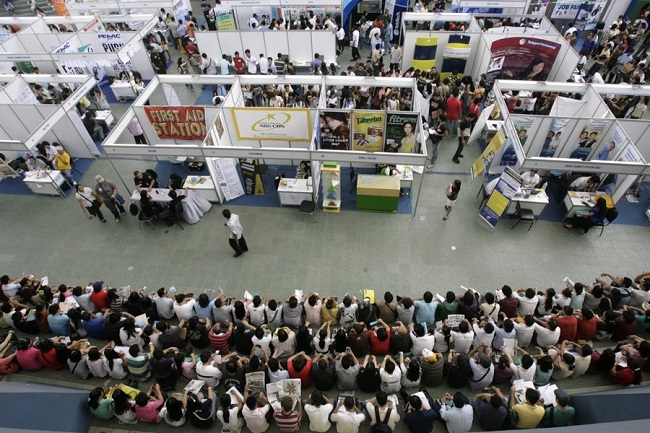
However, not always a crowd of people go to the shopping complexes exclusively for shopping. When in the Philippines there is an economic downturn, they arrange job fairs.
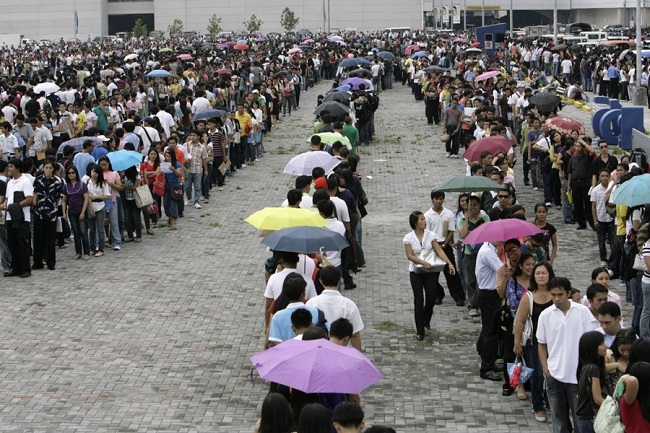
At these fairs thousands of people line up hoping to find work in order to improve the lives of themselves and their loved ones.
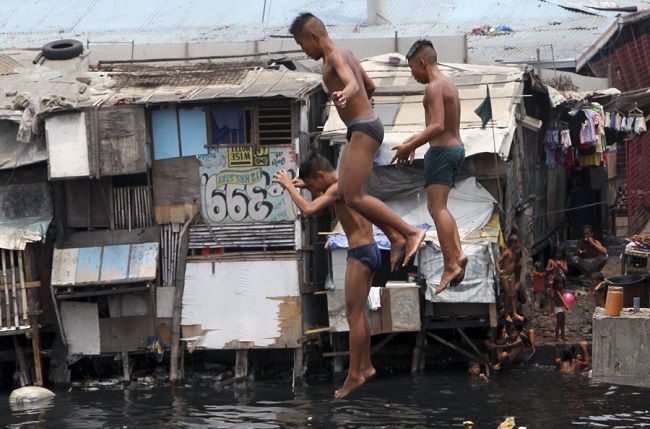
But even in such a densely populated city children find an opportunity to play. In Manila there are places where you can escape from the daily routine.
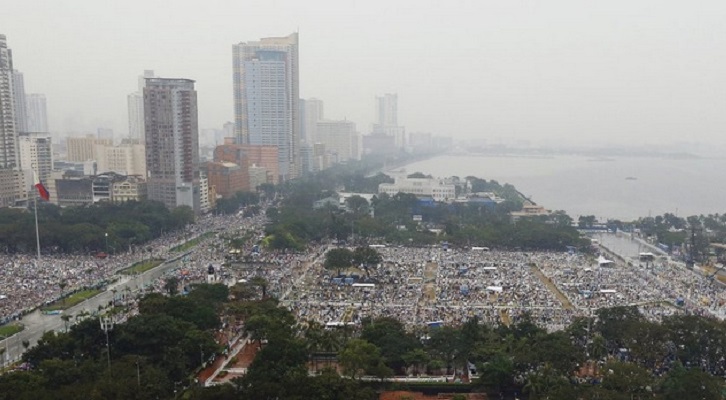
Despite all these facts, the birth rate is too high. Experts believe that the city’s population will double by 2025. However, the Philippines capital is absolutely not ready to accommodate an additional 1.6 million people.
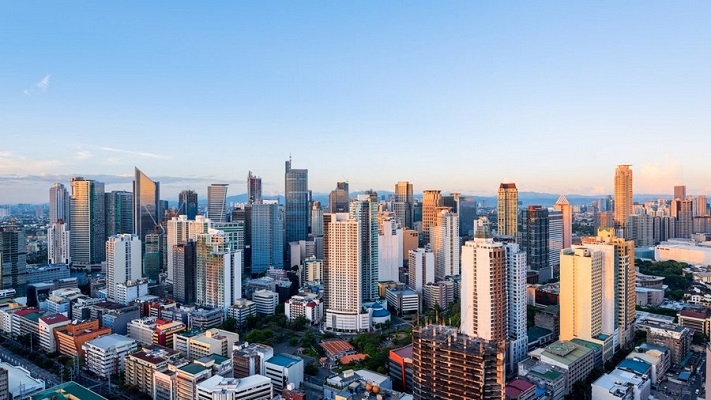
While many people live below the poverty line, Manila is growing rapidly, and its influence is growing. This means that the most populous city in the world has a chance to give its inhabitants a better life.


